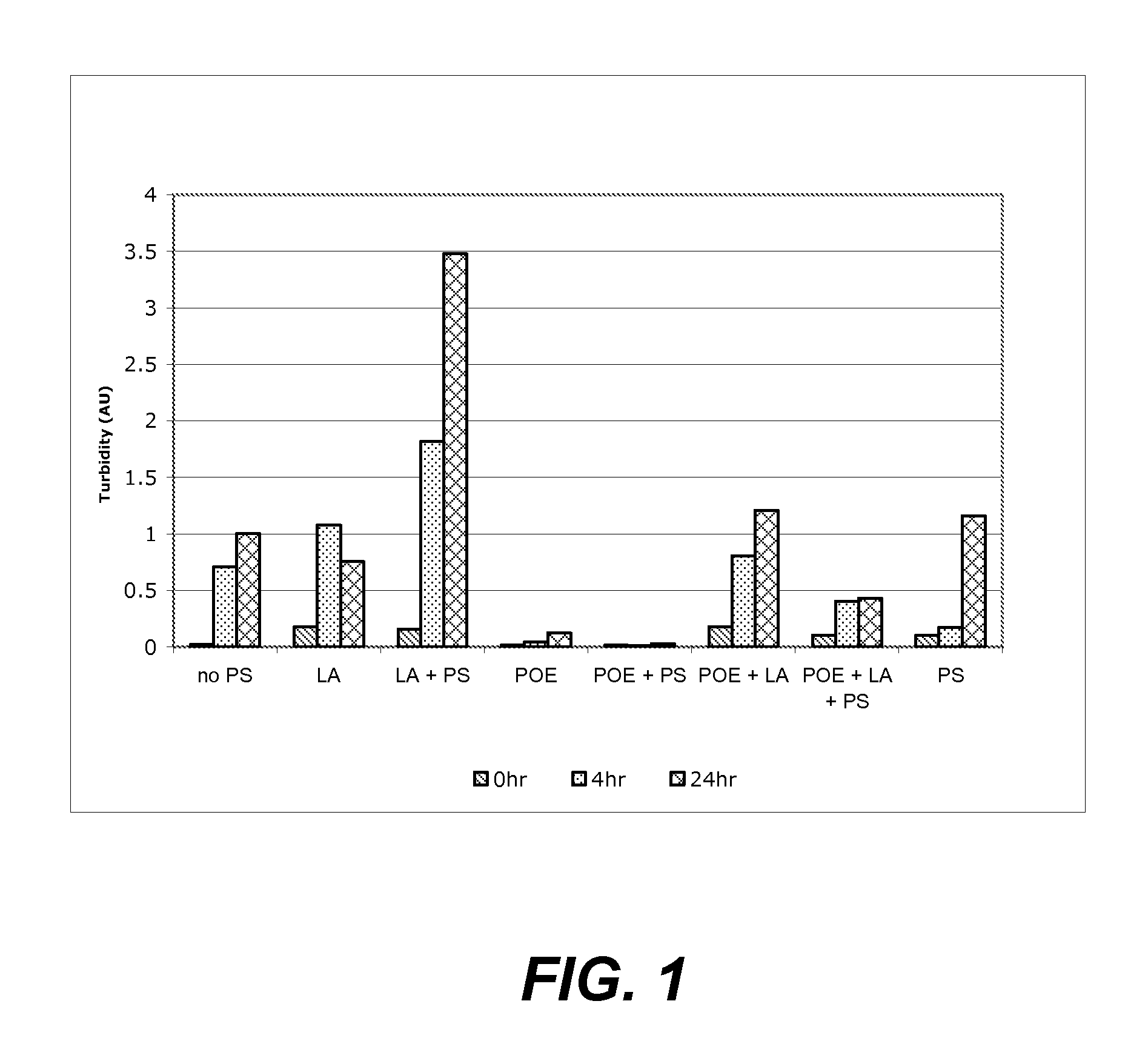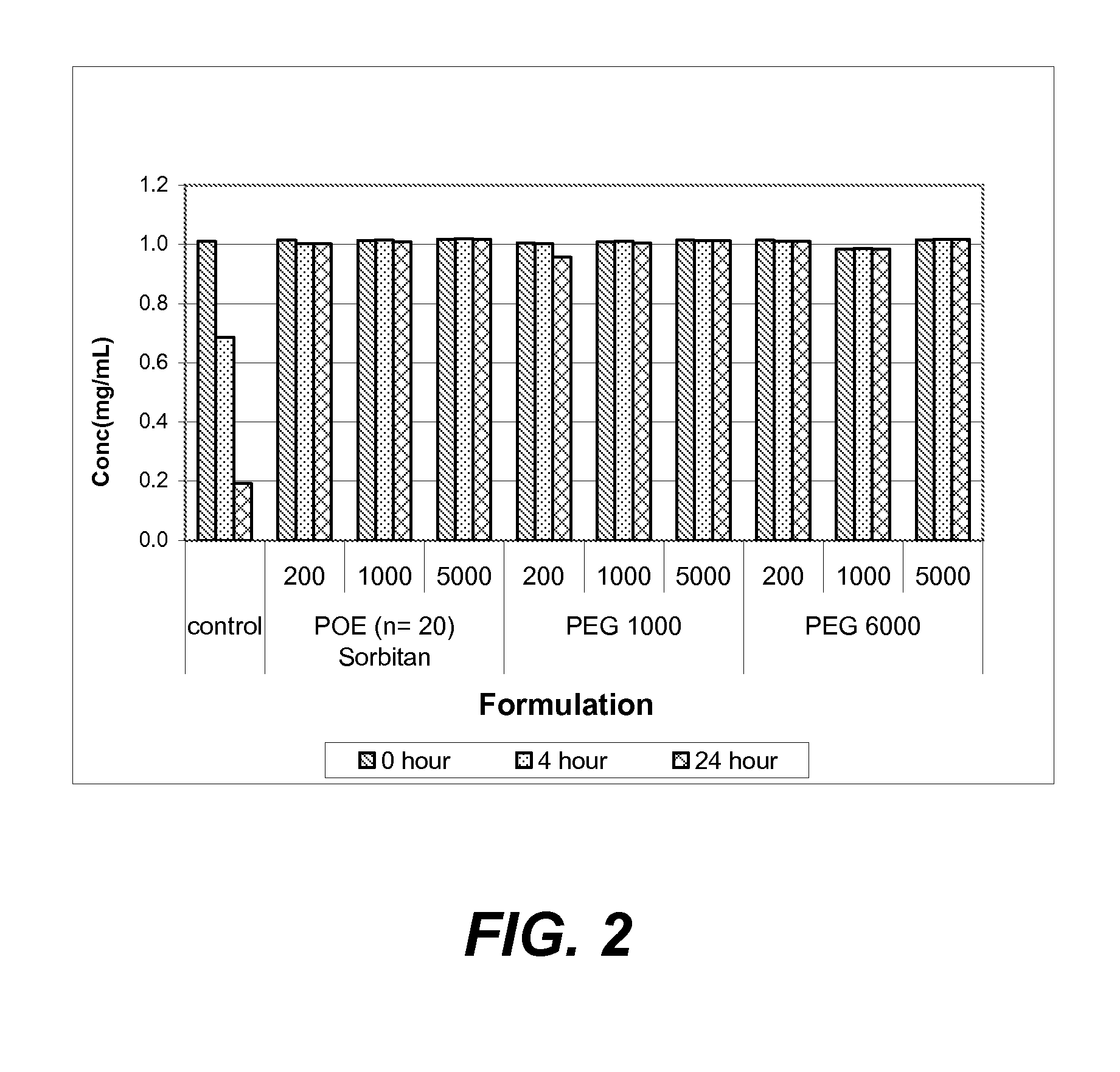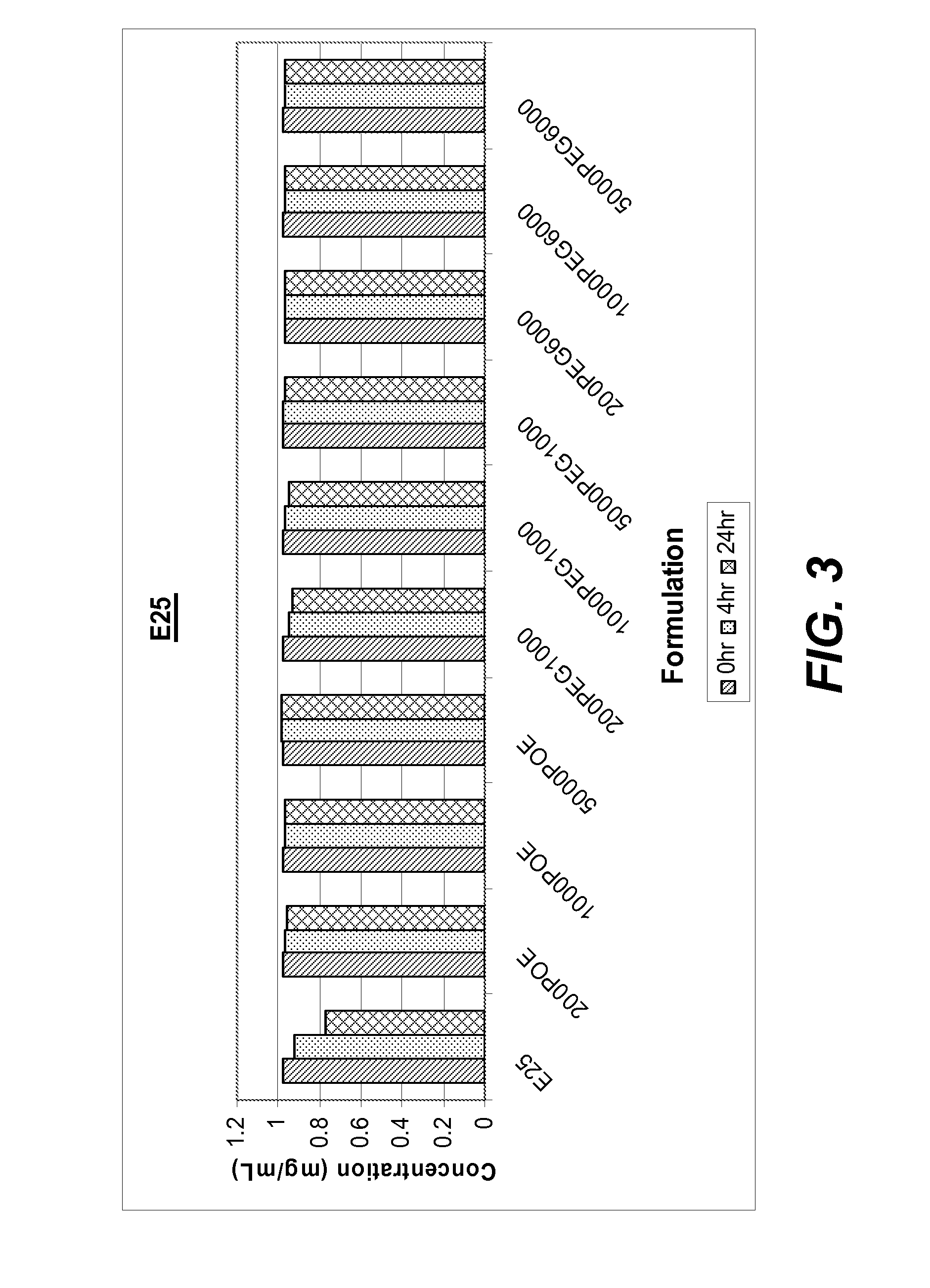Compositions and methods useful for stabilizing protein-containing formulations
a technology of formulations and compositions, applied in the direction of antibody medical ingredients, instruments, peptide/protein ingredients, etc., can solve the problems of reducing the protective effect of polysorbates in protein-containing formulations, affecting the stability of polysorbates, and oxidation or hydrolysis of polysorbates. , to achieve the effect of stabilizing protein and preventing protein aggregation
- Summary
- Abstract
- Description
- Claims
- Application Information
AI Technical Summary
Benefits of technology
Problems solved by technology
Method used
Image
Examples
example 1
Investigation of the Effect of Fatty Acids, Polysorbates and POE-Sorbitan on Protein Aggregation
[0149]This example illustrates how polysorbates, fatty acids and POE sorbitan affect protein aggregation in aqueous solution.
[0150]The protective action of POE sorbitan against agitation-induced aggregation of an anti-IL13 monoclonal antibody in solution was evaluated using an agitation-induced protein aggregation analysis. Specifically, in this study, buffered solutions containing 1 mg / ml of anti-IL13 monoclonal antibody (20 mM His-OAc, pH 5.7) were prepared in combination with the following potentially stabilizing additives:
[0151](i) no additive, control;
[0152](ii) lauric acid (29 ppm);
[0153](iii) lauric acid (29 ppm) and polysorbate 20 (24 ppm);
[0154](iv) POE sorbitan 20 “(a+b+c+d=20)” (150 ppm);
[0155](v) POE sorbitan 20 “(a+b+c+d=20)” (150 ppm) and polysorbate 20 (24 ppm);
[0156](vi) POE sorbitan 20 “(a+b+c+d=20)” (150 ppm) and lauric acid (29 ppm);
[0157](vii) POE sorbitan 20 “(a+b+c+d...
example 2
Investigation of the Effect of POE-Sorbitan and PEG on Protein Aggregation
[0161]This example illustrates use of POE sorbitans and PEGs as stabilizers to prevent or reduce aggregation of proteins.
[0162]The protective action of various POE sorbitans and PEGs against agitation-induced aggregation of two monoclonal antibodies, anti-IL13 and anti-IgE, in solution was evaluated using an agitation-induced protein aggregation analysis.
[0163]In this set of studies, buffered solutions containing 1 mg / ml of either anti-IL13 antibody (20 mM His-OAc, pH 5.7) or anti-IgE antibody (His-HisCl, pH 6.0) were prepared with the following additives:
[0164](i) no additive, control;
[0165](ii) POE sorbitan 20 “(a+b+c+d=20)” at a concentration of 200 ppm;
[0166](iii) POE sorbitan 20 “(a+b+c+d=20)” at a concentration of 1000 ppm;
[0167](iv) POE sorbitan 20 “(a+b+c+d=20)” at a concentration of 5000 ppm;
[0168](v) PEG 1000 at a concentration of 200 ppm;
[0169](vi) PEG 1000 at a concentration of 1000 ppm;
[0170](vii)...
PUM
| Property | Measurement | Unit |
|---|---|---|
| particle size analysis | aaaaa | aaaaa |
| particle size analysis | aaaaa | aaaaa |
| particle size analysis | aaaaa | aaaaa |
Abstract
Description
Claims
Application Information
 Login to View More
Login to View More - R&D
- Intellectual Property
- Life Sciences
- Materials
- Tech Scout
- Unparalleled Data Quality
- Higher Quality Content
- 60% Fewer Hallucinations
Browse by: Latest US Patents, China's latest patents, Technical Efficacy Thesaurus, Application Domain, Technology Topic, Popular Technical Reports.
© 2025 PatSnap. All rights reserved.Legal|Privacy policy|Modern Slavery Act Transparency Statement|Sitemap|About US| Contact US: help@patsnap.com



